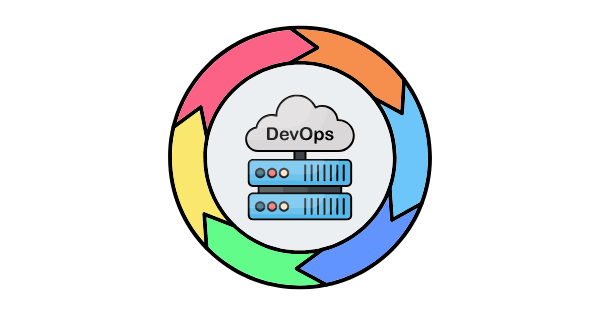How to Optimize Your Testing Process for Faster Software Releases
In the rapidly evolving world of software development, the pressure to deliver quality products quickly is greater than ever. Organizations must balance the need for speed with the uncompromising requirement of software reliability. Optimizing your testing process is the key to achieving faster software releases without sacrificing quality. This article explores practical strategies, best practices, and actionable tips that can help you streamline your testing process, reduce time-to-market, and improve overall product quality.
The Need for Faster Releases
The competitive software market demands rapid innovation and frequent updates. Faster releases help you:
- Stay ahead of competitors: Quick delivery of new features and bug fixes can capture market share.
- Respond to customer feedback: Rapid iterations allow you to quickly address user concerns.
- Improve revenue streams: Faster releases mean quicker time-to-market and enhanced profitability.
However, speeding up releases shouldn’t compromise software quality. Effective testing processes ensure that every release is robust, reliable, and secure.
Challenges in Traditional Testing Processes
Traditional testing processes often slow down software releases due to:
- Manual Testing Overload: Relying heavily on manual testing is time-consuming and error-prone.
- Fragmented Workflows: Testing often occurs in silos, separate from development and operations, leading to communication gaps.
- Delayed Feedback: Late-stage testing can uncover defects after substantial development, delaying the release cycle.
- Inefficient Test Coverage: Limited test case coverage can result in repeated cycles of fixes for overlooked issues.
Addressing these challenges requires rethinking your testing approach to streamline workflows, automate repetitive tasks, and ensure early defect detection.
Strategies to Optimize Your Testing Process
Streamlining your testing process is key to accelerating software releases without compromising quality. By adopting modern methodologies—such as test automation, integrating testing into CI/CD pipelines, implementing risk-based and Agile/DevOps practices, and leveraging cloud-based environments—you can reduce manual overhead, detect issues early, and enhance overall efficiency. These strategies work together to create a proactive, data-driven testing environment that fosters rapid iteration, robust defect resolution, and ultimately, a more competitive release cycle.

Embrace Test Automation
Automated tests run faster and more consistently than manual tests, reducing the time spent on repetitive tasks and allowing your team to focus on complex scenarios.
Actionable Tips:
- Identify repetitive tasks suitable for automation (e.g., regression tests, smoke tests).
- Choose automation tools that integrate with your technology stack (e.g., Selenium, Appium, Cypress).
- Build a maintainable and scalable test automation framework.
Integrate Testing into Your CI/CD Pipeline
Continuous Integration and Continuous Deployment (CI/CD) pipelines ensure that every code change is automatically tested and validated, accelerating the feedback loop and enabling early issue resolution.
Actionable Tips:
- Automate build and test processes to run tests on every code commit.
- Use CI/CD tools such as Jenkins, GitLab CI, or CircleCI to streamline integration.
- Implement continuous feedback mechanisms to keep the development team informed.
Implement Risk-Based Testing
Not all software components carry the same risk. Prioritizing testing efforts on high-risk areas ensures that critical issues are identified early, while optimizing resource allocation.
Actionable Tips:
- Prioritize test cases by identifying critical components.
- Conduct impact analysis to evaluate potential failure consequences.
- Allocate testing resources based on risk, focusing on high-impact areas.

Adopt Agile and DevOps Practices
Agile and DevOps methodologies promote continuous improvement, collaboration, and rapid iterations, ensuring integrated testing and faster feedback.
Actionable Tips:
- Shift left by involving testers early in the development cycle.
- Use iterative development to test continuously.
- Promote cross-functional teams to enhance collaboration between development, testing, and operations.
Utilize Test-Driven Development (TDD)
Test-Driven Development (TDD) involves writing tests before code development, ensuring that code meets its requirements and creating a reliable regression test suite.
Actionable Tips:
- Write unit tests before developing code.
- Focus on small, incremental changes guided by TDD.
- Refactor continuously to improve code quality and test coverage.
Leverage Cloud-Based Testing Environments
Cloud-based testing environments offer scalability, flexibility, and the ability to simulate real-world conditions more accurately. They allow you to run tests in environments that closely mirror production.
Actionable Tips:
- Adopt cloud platforms such as AWS, Azure, or Google Cloud for scalable testing environments.
- Configure environments to replicate production settings (data volume, network latency, etc.).
- Enable parallel testing to reduce overall testing time.
Measure, Analyze, and Improve
Tracking and analyzing testing metrics is essential for identifying bottlenecks and continuously improving your testing process. Data-driven insights help in making informed decisions.
Actionable Tips:
- Track key performance indicators (KPIs) like defect density, test coverage, and test execution time.
- Use reporting tools and dashboards to visualize data and monitor progress.
- Conduct regular reviews and retrospectives to identify areas for improvement.
Foster Collaboration and Communication
Seamless collaboration between development, testing, and operations is critical for an optimized testing process. Effective communication ensures early defect detection and faster resolution.
Actionable Tips:
- Use collaborative tools such as Slack, Microsoft Teams, or Jira.
- Hold regular cross-functional meetings to discuss progress and roadblocks.
- Encourage a culture of transparency to ensure all team members are aligned.
Pros and Cons of the Testing Process
| Strategy | Pros | Cons |
|---|---|---|
| Test Automation | • Accelerates repetitive testing (e.g., regression, smoke tests) • Ensures consistency and repeatability • Frees up manual testing resources | • High initial investment in tools and training • Requires ongoing maintenance |
| CI/CD Integration | • Provides continuous feedback • Catches defects early • Speeds up release cycles | • Can be complex to set up and manage • Demands strong team integration |
| Risk-Based Testing | • Focuses resources on critical, high-impact areas • Improves efficiency by reducing unnecessary tests | • May overlook lower-risk components • Depends on accurate risk assessment |
| Agile & DevOps Practices | • Enhances cross-team collaboration • Facilitates iterative improvements • Increases responsiveness to changes | • Requires significant cultural and process shifts • Can involve a steep learning curve |
| Test-Driven Development (TDD) | • Validates code early in development • Builds a robust regression suite • Encourages better design and structure | • Can slow initial development pace • Demands discipline and thorough training |
| Cloud-Based Testing | • Offers scalable, flexible testing environments • Accurately simulates production conditions • Enables parallel testing across instances | • May incur additional costs • Relies on cloud service reliability |
| Metrics & Continuous Improvement | • Facilitates data-driven decisions • Identifies bottlenecks for ongoing process enhancement • Supports continuous quality improvement | • Requires robust data collection and analysis • Can add overhead if not streamlined |
| Collaboration & Communication | • Promotes transparency and alignment across teams • Accelerates defect resolution • Reduces information silos | • Requires ongoing effort to maintain effective communication • Risk of miscommunication if processes are not well defined |
Optimizing your testing process is not about cutting corners—it’s about working smarter. By embracing automation, integrating testing into your CI/CD pipeline, implementing risk-based testing, adopting Agile and DevOps practices, utilizing TDD, leveraging cloud-based environments, and continuously measuring and improving your process, you can significantly accelerate your release cycle. These strategies help reduce manual overhead, catch defects early, and ensure that every stage of development is tightly integrated, resulting in higher quality software and faster time-to-market.
Further Reading and References
Books:
- Continuous Delivery: Reliable Software Releases through Build, Test, and Deployment Automation by Jez Humble and David Farley
- Agile Testing: A Practical Guide for Testers and Agile Teams by Lisa Crispin and Janet Gregory
- Test Driven Development: By Example by Kent Beck
Tools & Resources:
- Jenkins for CI/CD automation
- Selenium for test automation
- Cloud services from AWS, Azure, or Google Cloud for scalable testing environments













